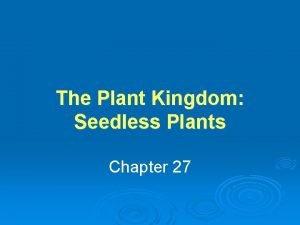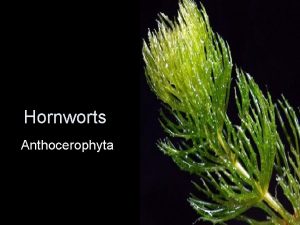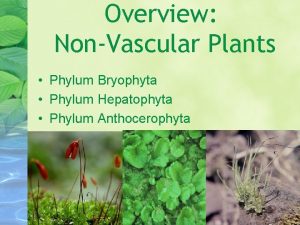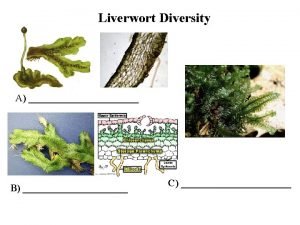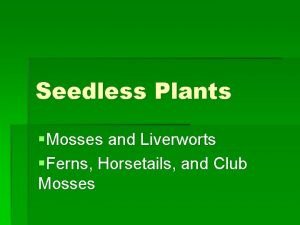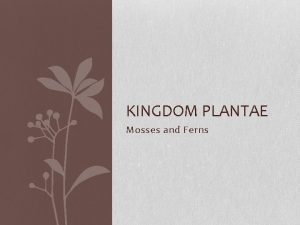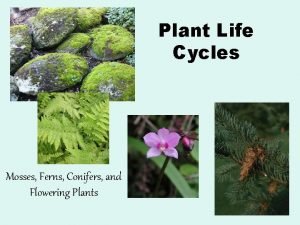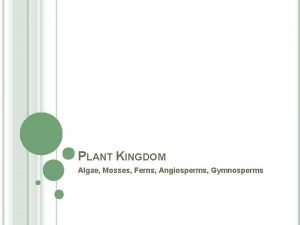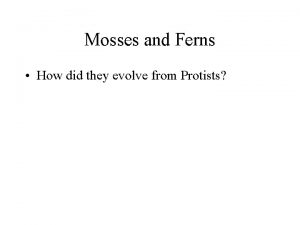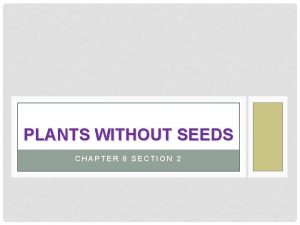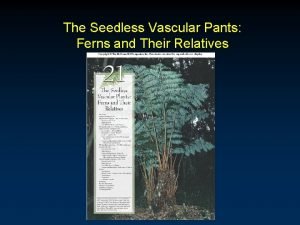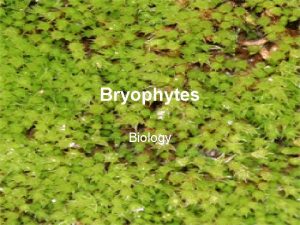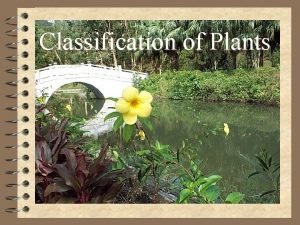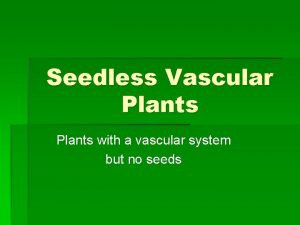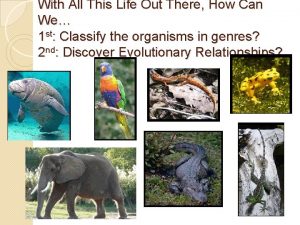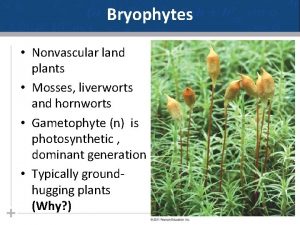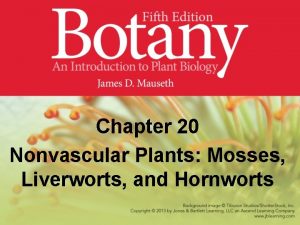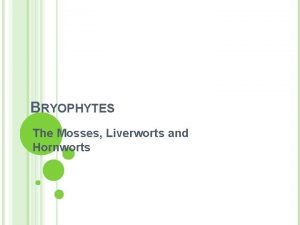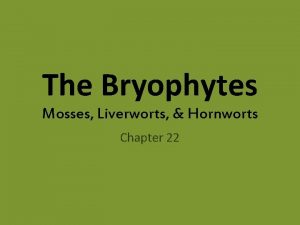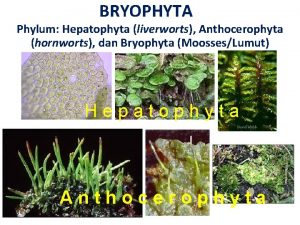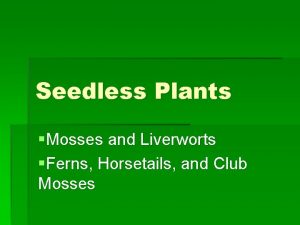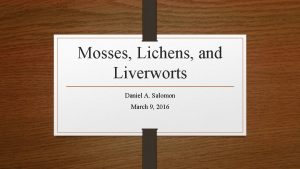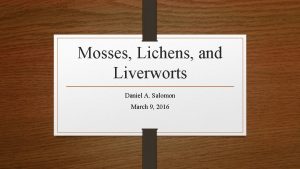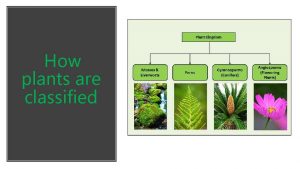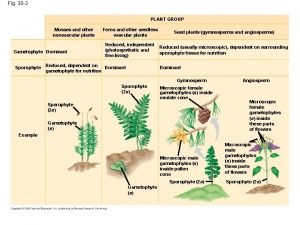8 2 Mosses Hornworts and Liverworts 8 3

















- Slides: 17

8. 2 Mosses, Hornworts, and Liverworts 8. 3 Ferns and their Relatives

Nonvascular Plants • All nonvascular plants are low-growing plants that lack vascular tissue. • Vascular tissue is a system of tube like structures that transport water and other materials.

Nonvascular Plants • These plants cannot grow very wide or tall; nonvascular plants are small and grow low to the ground. Moss Gametophyte Moss Sporophyte

Nonvascular Plants • lack roots, must obtain water and minerals directly from surroundings • live where water is plentiful • even nonvascular plants that live in drier areas need enough water for reproduction.

Mosses • most diverse group of nonvascular plants • Have structures that LOOK like leaves and stems (but they aren’t!)

Mosses • Don’t have roots, but thin root-like structures called rhizoids anchor the moss and absorb water and nutrients from the soil.

Liverworts and Hornworts • Liverworts are named for the shape of the plant’s body, which looks somewhat like a human liver.

Liverworts and Hornworts • found growing on moist rocks or soil along the sides of a stream. Most grow flat along the ground

Liverworts and Hornworts • The hornlike sporophytes give these plants their names. • live in moist soil, often mixed in with grass plants.

Characteristics of Seedless Vascular Plants • Ferns and their relatives have vascular tissue and use spores to reproduce. • Vascular plants are better suited to life on land than are nonvascular plants.

Characteristics of Seedless Vascular Plants • Vascular tissue transports water and food quickly and efficiently throughout the plant’s body. • strengthens the plant’s body

Characteristics of Seedless Vascular Plants • Ferns, club mosses, and horsetails still need to grow in moist surroundings because they use spores for reproduction.

Ferns • Ferns have true stems, roots, and leaves. • Roots are structures that anchor the fern to the ground absorb water and nutrients from the soil.

Ferns • The fern’s leaves are called fronds. • developing leaves are coiled at first and they resemble the top of a violin, so they are often called fiddleheads.

Ferns • On the underside of mature fronds, spores develop in tiny spore cases called sori.

Club Mosses and Horsetails • Club mosses and horsetails have true leaves, stems, and roots. • few species survive today

Club Mosses and Horsetails • The stems of horsetails are jointed. Long, coarse, needlelike branches grow in a circle around each joint.
 Microphylls
Microphylls Hornwort
Hornwort Hornworts structure
Hornworts structure Hornworts characteristics
Hornworts characteristics Hepatophyta kingdom
Hepatophyta kingdom Mature sporophyte
Mature sporophyte Liverworts seedless
Liverworts seedless Characteristic of kingdom plantae
Characteristic of kingdom plantae Life cycle of a gymnosperm
Life cycle of a gymnosperm Ferns and algae kingdom
Ferns and algae kingdom Mosses and ferns
Mosses and ferns Club mosses, horsetails and ferns are types of _____.
Club mosses, horsetails and ferns are types of _____. Ground pines spike mosses horsetails and ferns
Ground pines spike mosses horsetails and ferns Mosses and their relatives are generally called
Mosses and their relatives are generally called Characteristic of moss
Characteristic of moss Pterophyta examples
Pterophyta examples Are gymnosperms seedless
Are gymnosperms seedless Cladogram of five indoor plants
Cladogram of five indoor plants
